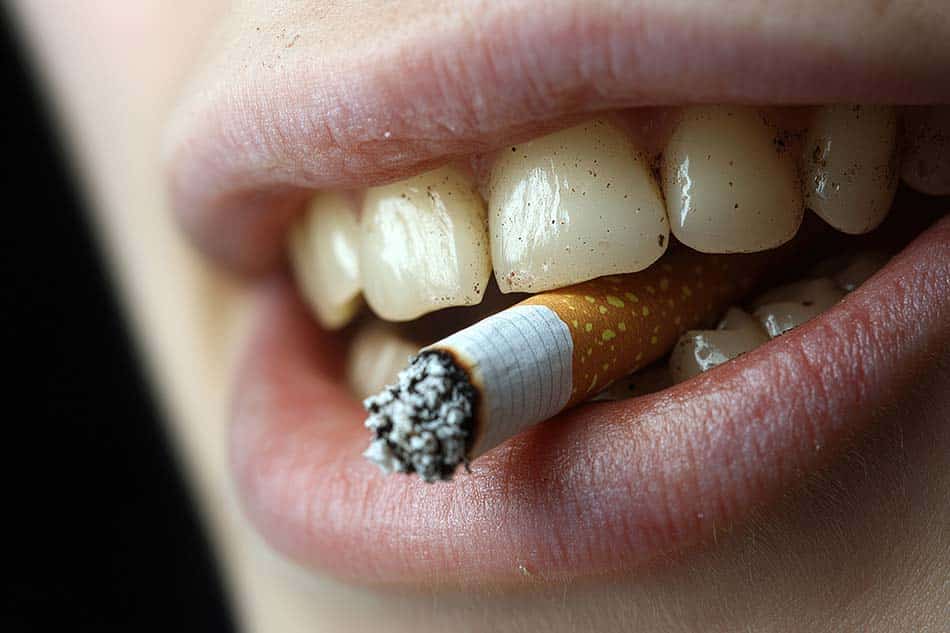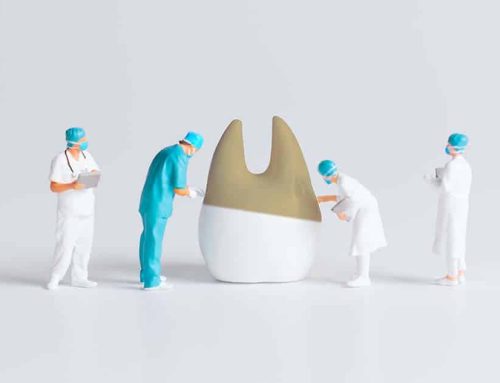Quick Fix: How to Remove Smoking Stains from Teeth
Smoking can leave noticeable stains on your teeth, making your once-bright smile look yellow or dull. These tobacco stains build up over time, and they can be hard to remove with just regular brushing. Not only do the stains affect how your teeth look, but they can also be a sign of other oral health problems, like plaque buildup or enamel damage.
Luckily, there are several ways to get remove smoking stains from teeth. Some methods take more time, while others, like laser teeth whitening, work quickly. Whether you want a professional teeth whitening treatment or an easy remedy at home, understanding the causes of smoking stains and how to remove them is the first step toward a brighter smile.
Understanding Tobacco Stains
Tobacco contains tar and nicotine, which cause yellow or brown stains on teeth. Tar sticks to the enamel, the outer layer of your teeth, and leaves long-lasting discoloration. Nicotine, when it mixes with oxygen, turns into a yellowish substance that seeps into your teeth, making stains even deeper and harder to remove.
These stains aren’t just on the surface. Over time, they can weaken enamel and lead to gum disease. If you want to remove stains from your teeth and improve your oral health, it’s important to explore the best methods for tackling the problem.
Traditional Whitening Methods
Whitening Toothpaste
Special whitening toothpastes are designed to clean surface stains caused by smoking. These toothpastes use mild scrubbing agents and chemicals to target stains on your enamel. While they can help improve your smile, they work slowly and need regular use to show results.
For best results, use whitening toothpaste as part of a daily routine that includes brushing and flossing. Combine it with regular dental cleanings for even better outcomes.
Over-the-Counter Whitening Strips
Whitening strips come with a gel that contains peroxide, a bleaching agent. You place the strips on your teeth, and with regular use over a few weeks, they can lighten smoking stains. However, they are better for surface stains and may not work as well on deeper discoloration caused by long-term smoking.
Some people may feel tooth sensitivity when using these strips, so it’s important to follow the directions and avoid overusing them.
Baking Soda and Hydrogen Peroxide
A common DIY method to remove tobacco stains is brushing with a paste made of baking soda and hydrogen peroxide. Baking soda acts as a gentle scrub, while hydrogen peroxide whitens the teeth. This can help remove surface stains, but it should only be done once or twice a week to avoid wearing down your enamel.
Always use fluoride toothpaste afterward to protect your enamel and keep your teeth strong.
Professional Whitening Kits
Dentists often provide take-home whitening kits that are stronger than store-bought products. These kits come with custom trays and a professional-grade whitening gel. You wear the trays for several hours or overnight, and you can see noticeable improvements in just a few days to weeks.
Professional kits are a good middle ground for people who want stronger results without the need for in-office treatments.

The Quick Fix: Laser Teeth Whitening
If you want fast results, laser teeth whitening is one of the best options. Here’s why it works so well:
What is Laser Teeth Whitening?
Laser whitening is a treatment done by a dentist. A whitening gel is applied to your teeth, and a special light or laser activates the gel, helping it penetrate the enamel and lift deep stains.
Quick and Effective
Laser whitening can brighten your teeth in just one session, which usually takes about 60 to 90 minutes. It’s much faster than traditional methods, making it a great choice if you need quick results.
Long-lasting Results
The effects of laser whitening can last for six months or longer if you maintain good oral hygiene. Not only does it remove stains from teeth, but it can also help keep your teeth looking bright with proper care.
Minimal Sensitivity
Unlike some other whitening methods, laser whitening is gentle. Dentists use protective barriers to shield your gums, reducing discomfort and sensitivity during the treatment.
Tips for Keeping Your Smile Bright
- Quit Smoking: The best way to avoid new stains is to stop using tobacco products. This includes both cigarettes and chewing tobacco. Quitting also improves your overall health.
- Get Regular Cleanings: Professional dental cleanings help remove plaque and surface stains, keeping your teeth bright. Teeth cleaning also ensures your oral health is maintained.
- Use a Straw: When drinking beverages like coffee, tea, or soda, use a straw to minimize contact with your teeth.
- Brush and Floss Daily: Keeping up with daily brushing and flossing removes food and stains before they settle on your teeth. Use toothpaste made for smokers to target nicotine stains and improve stain removal.
- Try Touch-up Treatments: If you notice stains coming back, schedule touch-ups with your dentist or use at-home whitening kits to maintain your results. Counter teeth whitening products can also be a good option for regular maintenance.
Wrapping It Up: Achieving a Brighter Smile
Removing smoking stains from teeth doesn’t have to be difficult. While traditional methods like whitening toothpaste and strips can help, laser teeth whitening is the fastest and most effective way to restore your smile. With regular care and smart habits, you can enjoy a bright, confident smile for years to come.
If you’re ready to say goodbye to smoking stains, talk to a dental professional today. Your brighter smile is just one appointment away!


